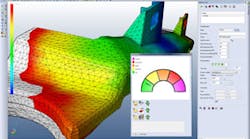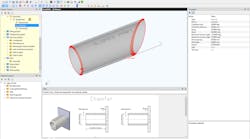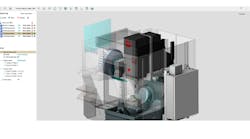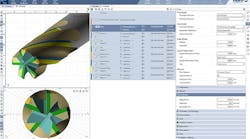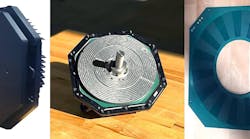CAD/CAM/CAE software developer Vero Software is releasing an update to its flagship product this summer. It has said that VISI 19 brings substantial updates to the program — which is widely used in machine shops that specialize in mold tooling production — including core 3D CAM development and a continued focus on tool design and manufacturing.
Headquartered in England, Vero Software designs, develops, and supplies CAD/CAM/CAE software for design and manufacturing process efficiency.
VISI Modelling is the base platform for all products and enhancements include an updated GUI with improved user interaction, new blending capabilities, improved annotation, advanced profile offset, graphical texture mapping and support for the increasingly prominent JT Open file format.
VISI Mould enhancements include an a new Assembly Tool Manager to handle multi-level tool structures, and provide the ability to generate specific tree hierarchy structures for the creation of partial BOM lists.
New developments in the VISI Flow mode include a new part-quality tool with potential remedy suggestions for each problem area and improved filling analyzes and flow balancing due to the fine tuning of melt compressibility at end of the filling phase.
For sheet metal stamping, VISI Progress enhancements include three new dedicated routines to manage complex springback based on results from CMM machines, third-party FEA systems and bend section geometry. Each routine includes skimming capabilities to reduce point clutter and allows the operator to define an additional percentage to over compensate for the springback deformation.
Vero Software stated that VISI 19 represents the results of significant resources allocated to CAM development. “A number of new machining algorithms have been introduced that will greatly benefit both Vero customers and OEM partners,” according to the developer.
New CAM routines offered with VISI 19 include 'HM Rib Cutting' for the machining of very thin walls; and 'Deep Cavity Machining' for the automated splitting of roughing and finishing toolpaths into separate Z ranges, based on collision checking between the piece and the tool/holder, providing greater rigidity, reduced vibration, and longer tool life.
A new 'Core Roughing' strategy has been developed that generates an improved toolpath shape when working from outside a component. The result is a flowing toolpath that allows the machine to run near to its maximum potential when machining core components.
A new 'HM Constant Z' toolpath has been introduced to complement the existing steep-and-shallow toolpath. This combined finishing routine replaces very sophisticated 3D pocketing calculations with 2D projection calculations for shallow areas, and can reduce calculation times significantly, according to the developer.
Finally a 64-bit engine will boost performance and allow users to benefit from maximum RAM usage.
VISI PEPS-Wire development has continued with new technology added and further migration of historic PEPS capabilities to the new VISI platform. These include slug retention, feature recognition for land and taper features, CT Expert integration, VDM file import and pocketing with finishing allowance, a new routine that allows the user to partially pocket an aperture by specifying the remaining stock left to cut. This will improve wire usage by keeping fresh air cutting to a minimum, according to Vero.
